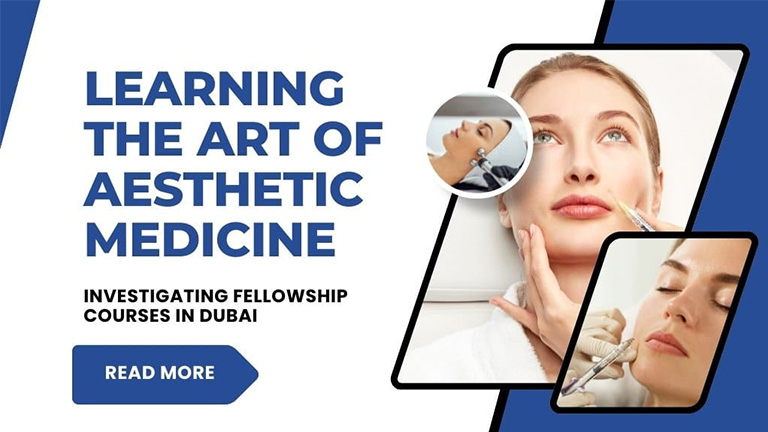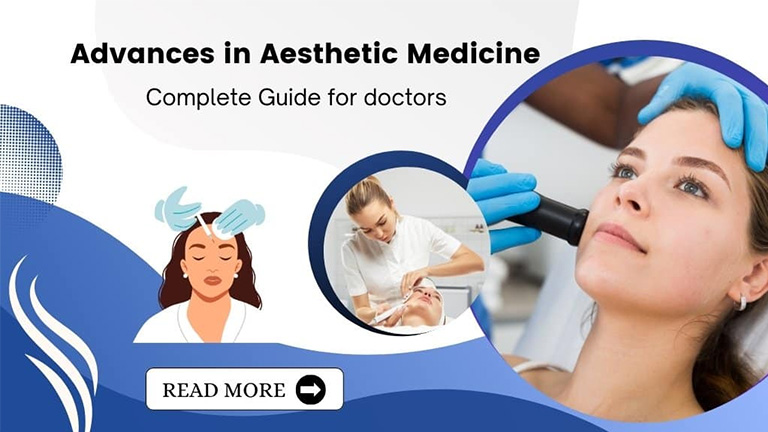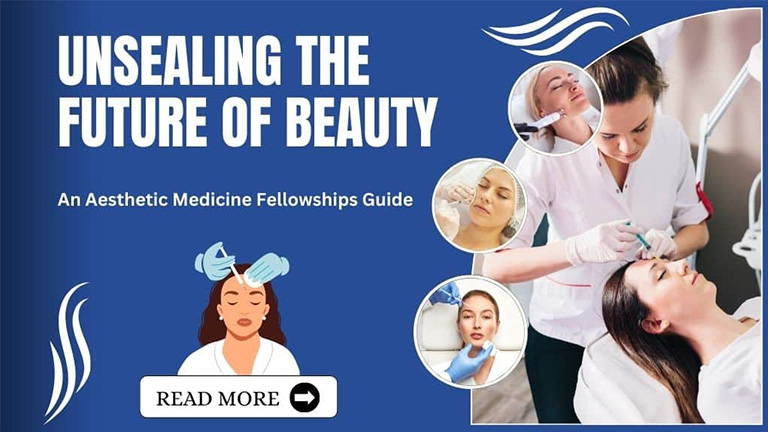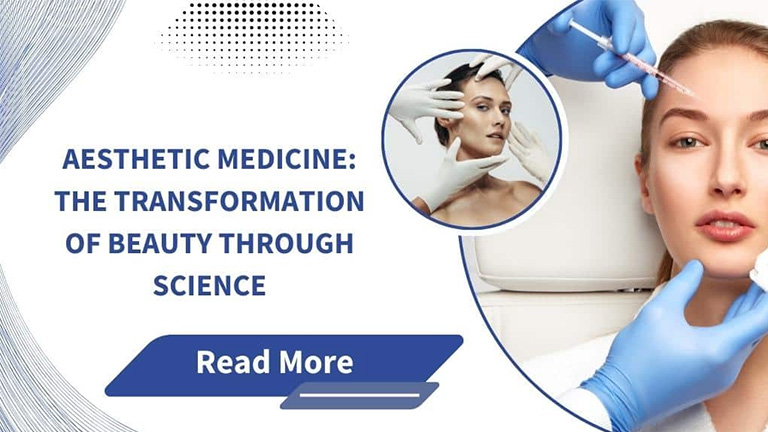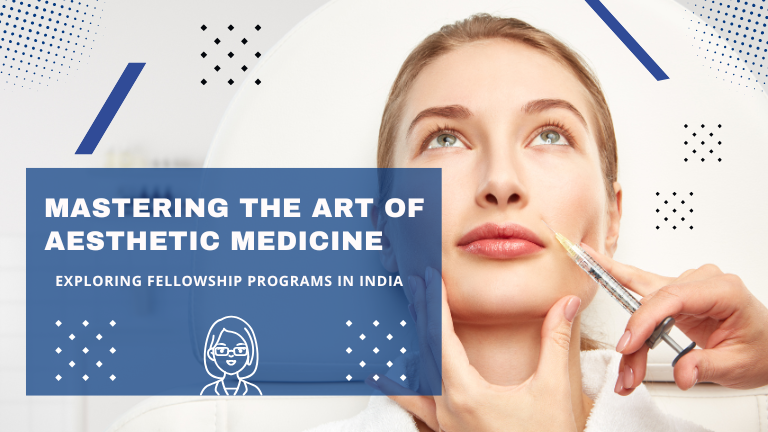Aesthetic medicine is a rapidly evolving subspecialty-one that merges art with medicine. It is the broad universe of nonsurgical interventions and procedures for enhancing one’s physical appearance, confidence, and thus quality of life. As more demand arises for aesthetic treatments, so too is there an even greater necessity for capable, informed practitioners. The Fellowship in Aesthetic Medicine is one of the optimal ways that can prepare trainees to become experts in this field.
Significance of Acquisition of Non-Invasive Treatments
In Aesthetic Medicine, the delivery of treatments like Botox and dermal fillers is becoming a necessary skill. These treatments provide an instant effect with no, or at least very little, downtime; therefore, the patients are asking for them. Safety and efficacy in the education of such treatments are the top priorities for any healthcare practitioner who wishes to be at the top of the game. Botox is a neuromodulator; it temporarily blocks nerve impulses, which assists in diminishing the visibility of dynamic wrinkles, whereas dermal fillers replace volume to erase facial creases. Proficiency in these procedures not only adds to a practitioner’s repertoire but also significantly contributes to enhancing patient satisfaction and results.
Objectives of Aesthetic Medicine Courses
The goals set for the Aesthetic Medicine Courses are as follows in making medical practitioners the best in this fast-paced field:
- Training of Registered Medical Practitioners: This course should be used to train registered medical practitioners in aesthetic medicine and make them the Best Doctors in Aesthetics.
- Development of Knowledge and Competencies: This program in aesthetic medicine would provide knowledge, skills, and techniques to the medical professional.
- Practical Exposure: It would provide participants with hands-on practical experience in treating actual patients with the latest treatments and materials in vogue.
- Patient Safety: The course includes new techniques for the treatment of routine aesthetic conditions, keeping patient safety and the medical standards at their top priority.
- Skin and Cosmetic Issues: The treatment of skin and cosmetic issues in this fellowship program has been directed towards a more holistic way, seeking enhancement, rejuvenation, and restoration.
- Specifically, Symmetry and Proportions: The trainees learn the important analyses of the factors of symmetry and proportion for optimal aesthetic result.
- Protocols and Ethics: The procedures that must be complied with, the clinical practice guidelines, and ethical principles that must be adhered to in aesthetic medicine are part of this program.
Training Methods
Fellowship in Aesthetic Medicine is the postgraduate training making use of various methods for proper learning:
- Hands-on Tutorials: The program offers a clinically focused hands-on tutorial to give optimal exposure of scientific, clinical, and industry information to the medical practitioner required to introduce non-invasive aesthetic procedures into their practice.
- Learning from the Best Professors: Participants are taught by highly experienced professors who will be performing techniques on actual patients. This allows the audience to equate theoretical knowledge with reality for enhanced learning.
- All Levels: From the aesthetic medicine beginner to someone with a little more experience, this fellowship is an excellent scenario for both because the information can be applicable to each of them.
- Preparation for Private Practice: The Aesthetic Medicine Fellowship provides physicians with thorough knowledge regarding all the steps of aesthetic medicine from establishing practice to acquiring competency and knowledge in treating patients with complete confidence.
Aesthetic Medicine Courses for Doctors in Dubai
Dubai contains a number of well-known institutions providing Aesthetic Medicine Courses for Doctors. Some of these include:
- ILAMED’s Fellowship in Aesthetic Medicine (FAM): The comprehensive aesthetic medicine course, from basic to advanced levels, with rigorous hands-on training. Doctors will be prepared to dive into instant aesthetic medicine practice with this course.
- Fellowship in Aesthetic & Anti-Aging Medicine: Offered by the ICAM Institute, this course educates a medical professional in aesthetic medicine, anti-aging treatment, advanced procedures, anti-aging therapies, and the holistic approach towards skin rejuvenation.
- Online Fellowship in Aesthetic Medicine: Offered in the Indian Institute of Aesthetic Medicine, thereby allowing a candidate with online learning pattern and hands-on practice sessions with better exposure to advanced and basic aesthetic procedures.
- Fellowship in Cosmetic and Aesthetic Medicine: Most universities provide this postgraduate program that is advanced and focuses primarily on cosmetic procedures and non-surgical aesthetic treatments so that the health professional will be well-equipped with theoretical knowledge and practical skills.
Career Avenues Open After the Courses in Aesthetic Medicine
A medical professional can obtain a number of career paths after finishing their Courses in Aesthetic Medicine. A few of the career paths that a candidate can pursue are:
- Cosmetic Clinics: There are special aesthetic clinics that provide a variety of cosmetic treatments for which the graduates can work.
- Dermatology Centers: Dermatology centers can also specialize in skin-related aesthetic treatments.
- Plastic Surgery Practices: Besides private practices, in general, fellowship graduates work under plastic surgeons in collaboration for even better outcomes of patients.
- Private Practice: Most practitioners want to start their own private aesthetic medicine clinics and provide personalized aesthetic medicine procedures.
- Research and Academia: Most of them will work in research or teaching and become contributors to the evolution of aesthetic medicine.
Conclusion
In a global economy where aesthetic medicine is one of the emergent new areas, undertaking a Course in Aesthetic Medicine could be a life-changing experience for medical professionals wishing to gain expertise in this exciting and rewarding branch of medicine. Systematic training alongside practical experiences and ethical learning can make an enormous difference in patients’ lives. Assisting the patient in achieving his or her desired aesthetic outcome while fostering health and well-being will indeed enable the graduate fellow to be a success in the art and science of aesthetic medicine.
As the demand for aesthetic procedures grows, aesthetic medicine is highly promising, and those who commit to their education by means of fellowships will be highly positioned to be leaders in this exciting field. These Aesthetic Medicine Courses for Doctors will provide practitioners with proper skills, along with confidence to perform the multiple complexities of aesthetic treatments while maintaining patient safety and satisfaction. In fact, aesthetic medicine continues to find its place with technology and patient care; therefore, a properly trained practitioner can contribute to the future of this thriving category.

